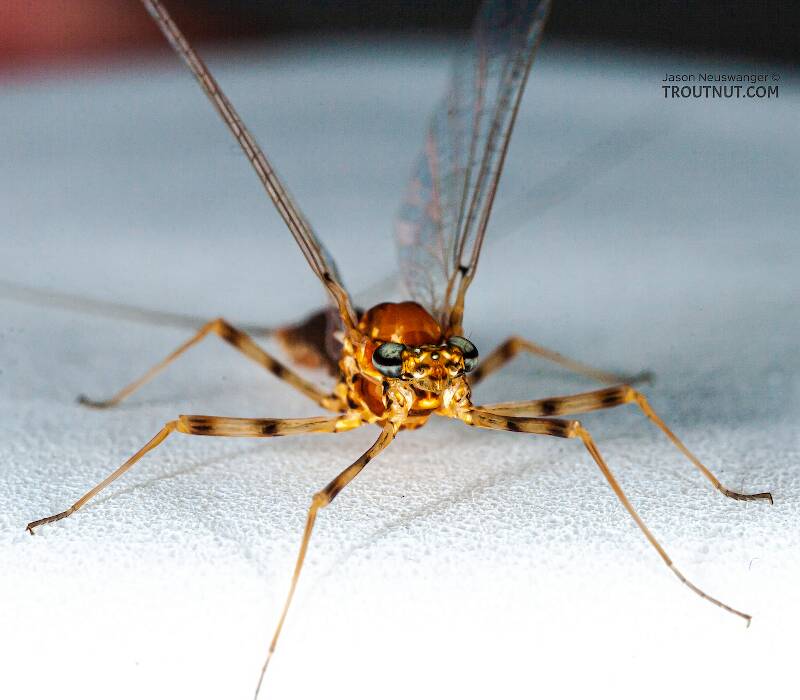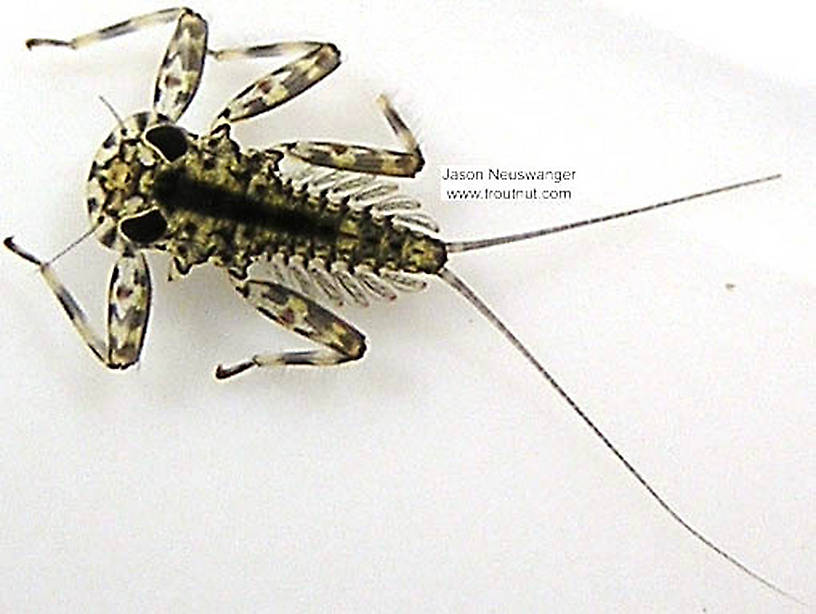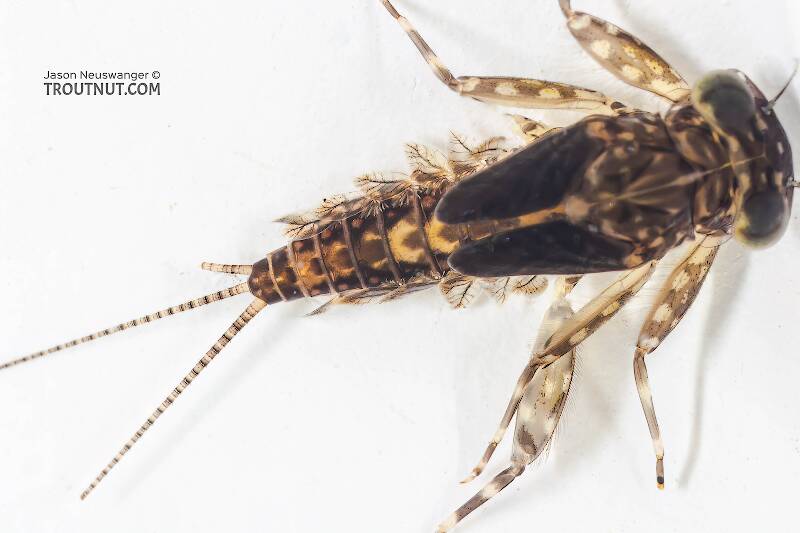
Hex Mayflies
Hexagenia limbata
The famous nocturnal Hex hatch of the Midwest (and a few other lucky locations) stirs to the surface mythically large brown trout that only touch streamers for the rest of the year.
Featured on the forum

This wild-looking little thing completely puzzled me. At first I was thinking beetle or month larva, until I got a look at the pictures on the computer screen. I made a couple of incorrect guesses before entomologist Greg Courtney pointed me in the right direction with Psychodidae. He suggested a possible genus of Thornburghiella, but could not rule out some other members of the tribe Pericomini.

Troutnut is a project started in 2003 by salmonid ecologist Jason "Troutnut" Neuswanger to help anglers and
fly tyers unabashedly embrace the entomological side of the sport. Learn more about Troutnut or
support the project for an enhanced experience here.
Gray-Winged Yellow Quills
Like most common names,"Gray-Winged Yellow Quill" can refer to more than one taxon. They're previewed below, along with 6 specimens. For more detail click through to the scientific names.
Mayfly Species Epeorus vitreus
These are sometimes called Gray-Winged Yellow Quills.
This is the second most common Epeorus species in the East and Midwest. Most anglers will encounter sporadic hatches of Epeorus vitreus once in a while, and sometimes a more concentrated emergence causes a good rise of fish.
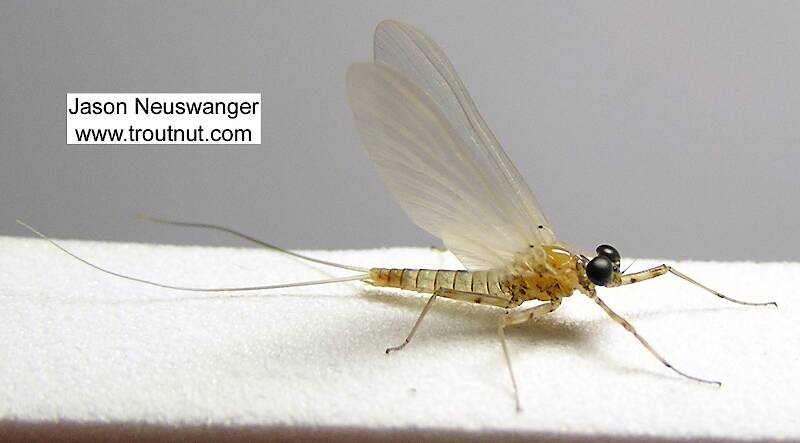
This is my favorite mayfly from 2004, and it appears on my popular Be the Trout: Eat Mayflies products. Check them out!
Its identification is really up in the air. It might be a late-season vitreus dun but it may very well be one of the more obscure species in that genus.
Its identification is really up in the air. It might be a late-season vitreus dun but it may very well be one of the more obscure species in that genus.
See 12 more specimens...
Mayfly Species Leucrocuta hebe
These are very rarely called Gray-Winged Yellow Quills.
This widespread species produces more fishable hatches in the East and Midwest than any other species in the Heptagenia genus complex.
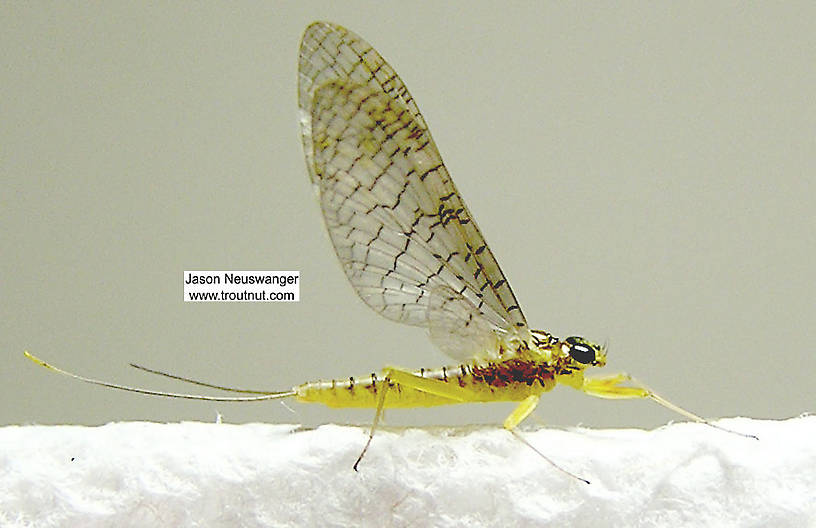
I found Catskill brown trout eagerly surface feeding to this species.
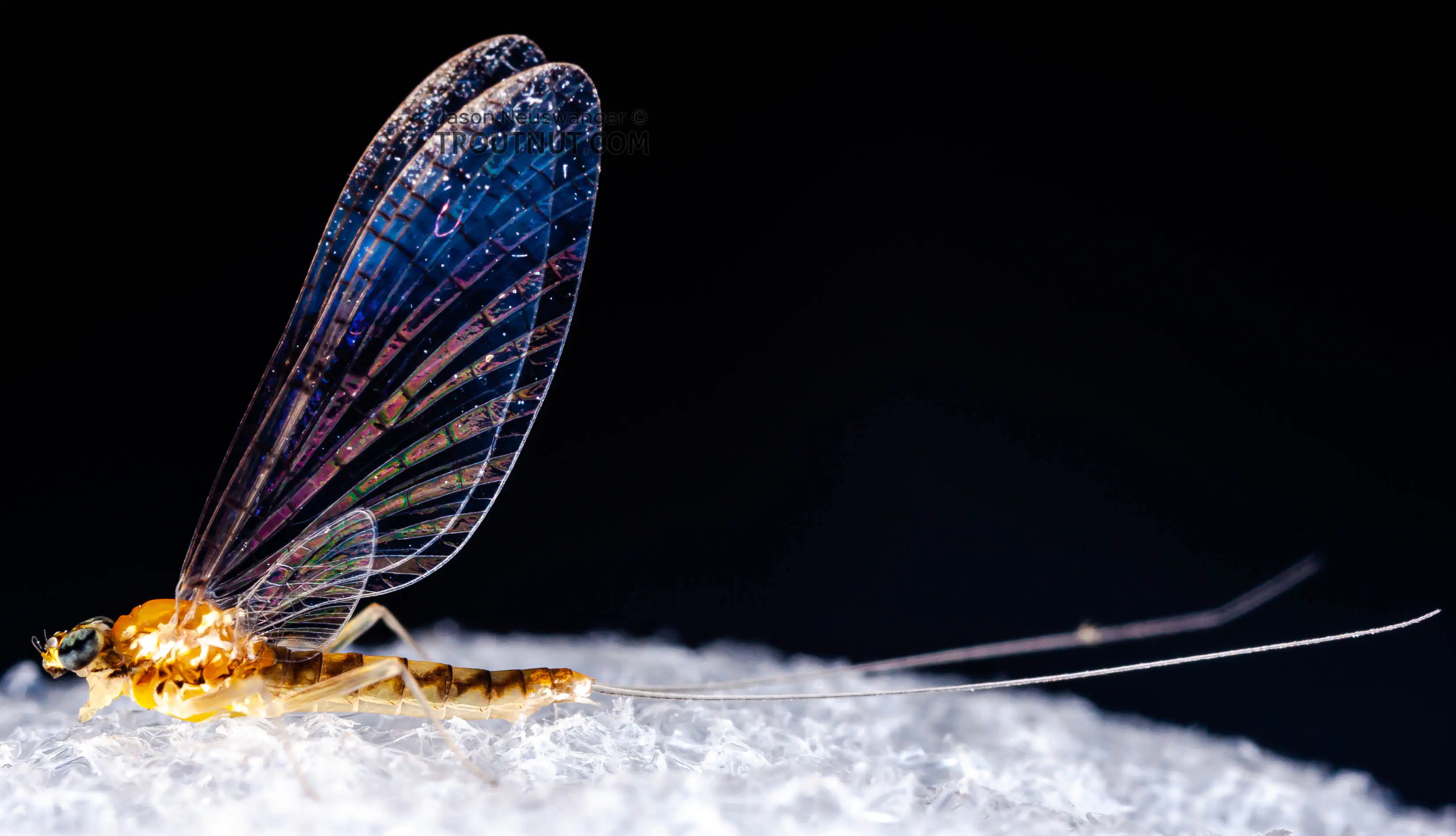
I found this spinner on the same piece of stream as a similar dun, probably of the same species.
See 8 more specimens...


